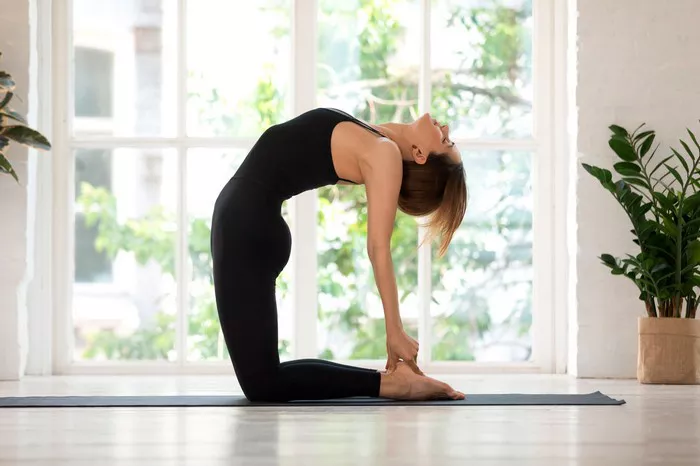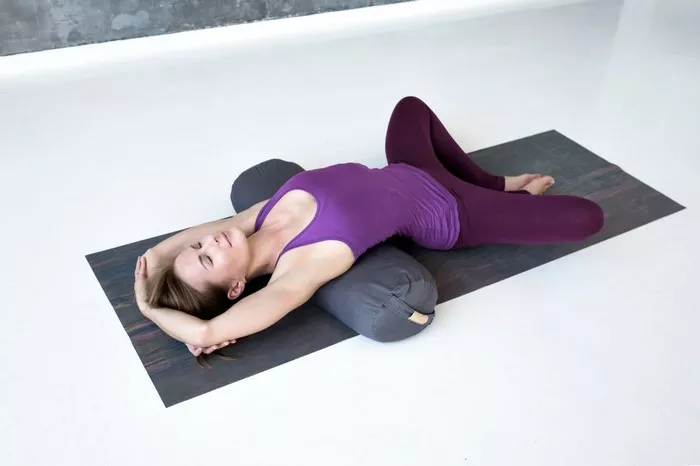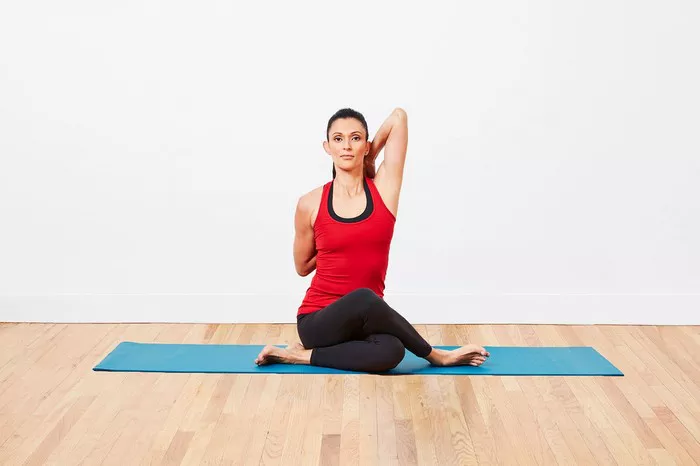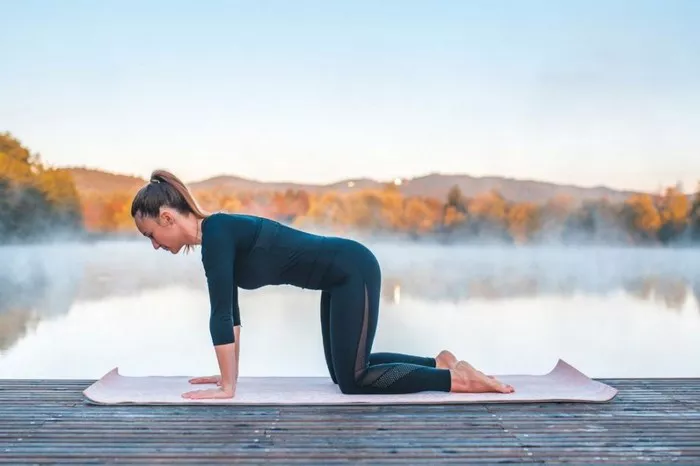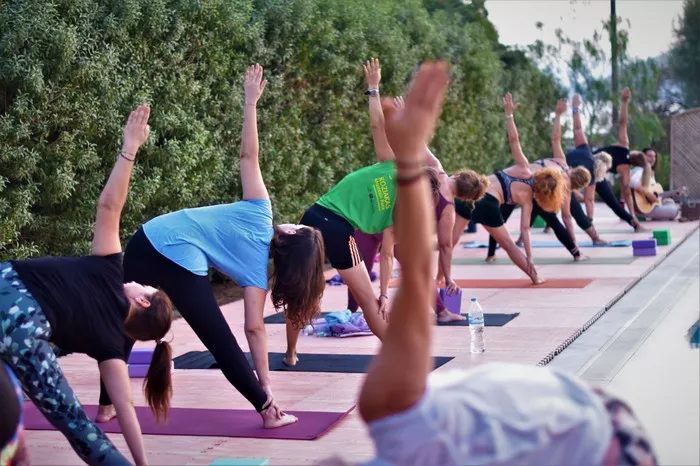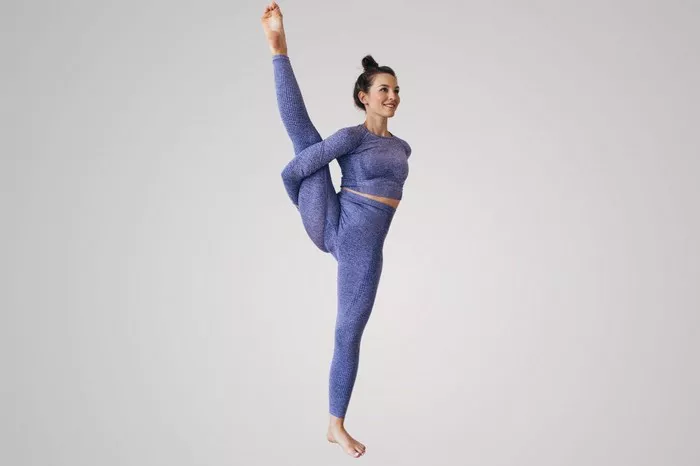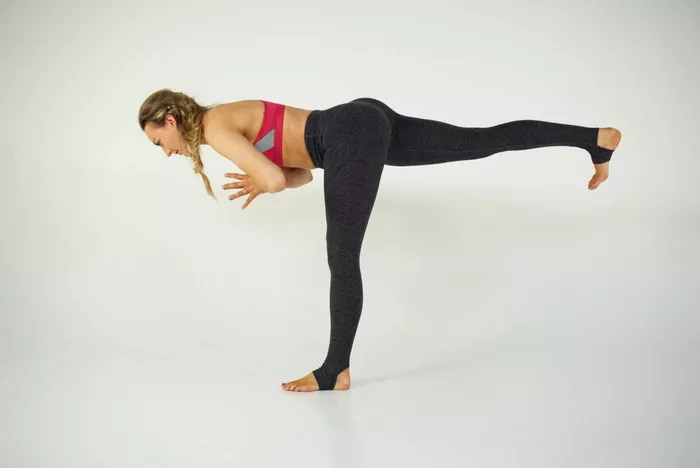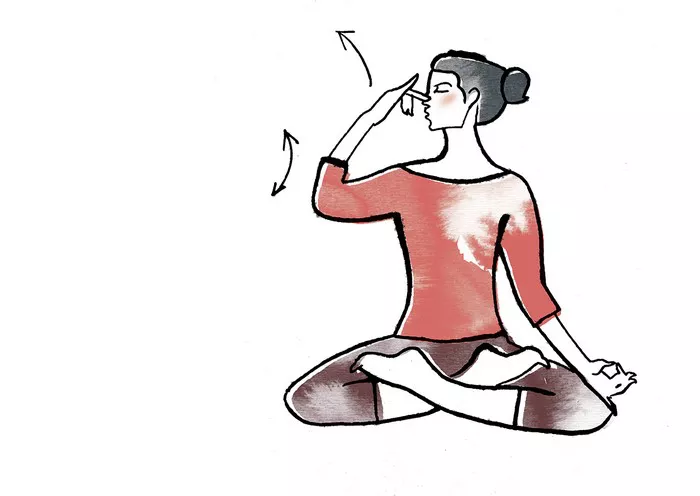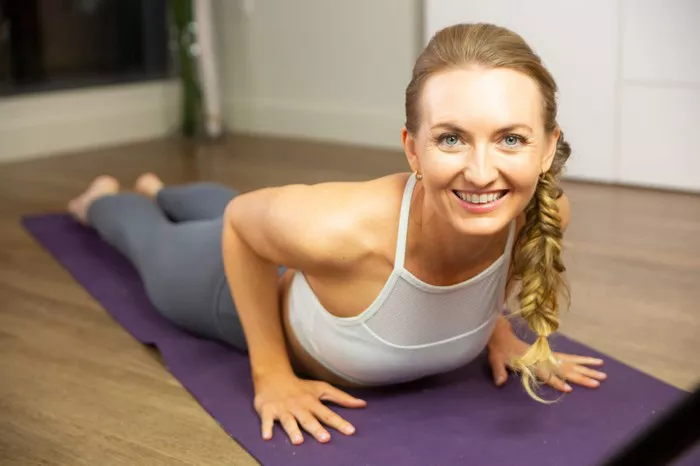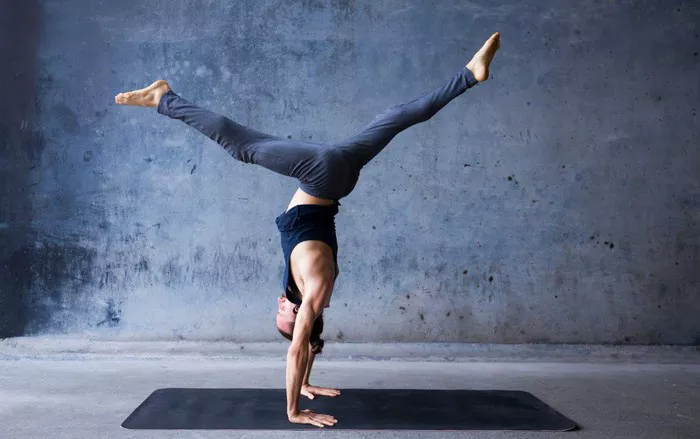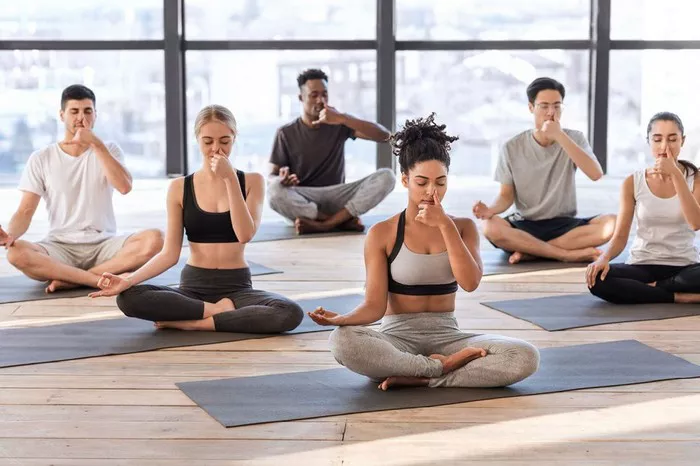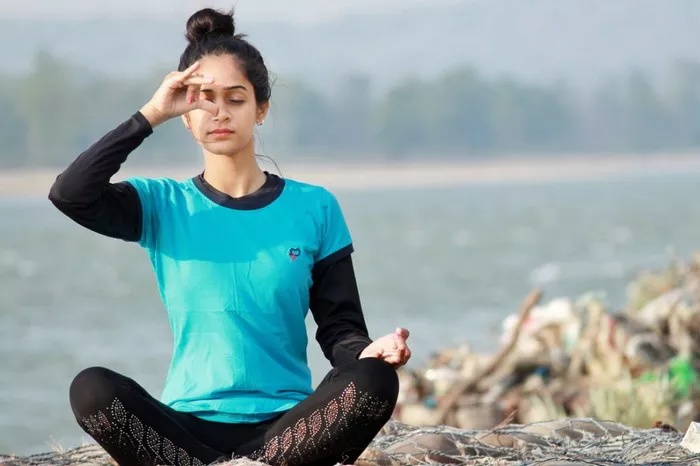Scoliosis is a medical condition characterized by an abnormal lateral curvature of the spine. Typically, a healthy spine appears straight when viewed from the back, but in individuals with scoliosis, the spine curves to the side, often forming an “S” or “C” shape. This curvature can lead to various physical complications, including uneven shoulders or hips, back pain, reduced lung function, and in severe cases, impaired mobility. Scoliosis affects people of all ages but is most commonly diagnosed during adolescence. While there are different types of scoliosis—such as idiopathic, congenital, and neuromuscular—the management strategies often vary depending on the severity and cause of the curvature.
Traditional treatments for scoliosis range from observation and physical therapy to bracing and surgery, especially in more severe cases. However, complementary therapies, including yoga, have gained popularity as non-invasive options to manage symptoms and improve spinal alignment. Among various yoga styles, Iyengar Yoga has drawn particular interest for its potential benefits in scoliosis treatment, given its emphasis on alignment, precision, and use of props.
What Is Iyengar Yoga?
Iyengar Yoga is a form of Hatha Yoga developed by B.K.S. Iyengar, renowned for its meticulous focus on body alignment and detail. Unlike some dynamic or flow-based yoga practices, Iyengar Yoga emphasizes holding poses (asanas) for longer durations to deepen muscle engagement and foster alignment awareness. This approach is designed to provide practitioners with an improved sense of balance, strength, and flexibility.
One of the key features of Iyengar Yoga is the use of props such as blocks, straps, bolsters, and chairs. These tools allow individuals of varying ability levels to achieve proper form without strain or injury. This adaptability makes Iyengar Yoga suitable for people with physical limitations, including those with scoliosis, as the practice can be tailored to accommodate and support spinal irregularities.
Core Principles of Iyengar Yoga Relevant to Scoliosis
- Precision in Alignment: Iyengar Yoga stresses exact positioning of body parts, which can encourage better spinal alignment.
- Use of Props: Props help maintain proper posture and relieve strain on muscles compensating for the spinal curve.
- Strength Building: Holding poses strengthens core and back muscles that support the spine.
- Mindful Awareness: The practice fosters body awareness, helping individuals notice and correct imbalances.
How Can Iyengar Yoga Help in Treating Scoliosis?
While yoga is not a cure for scoliosis, Iyengar Yoga offers specific therapeutic benefits that may help manage symptoms and improve spinal health. The key ways in which Iyengar Yoga supports scoliosis treatment include:
1. Improving Spinal Alignment and Posture
Due to the curvature, individuals with scoliosis often develop compensatory postural habits that exacerbate muscular imbalances. Iyengar Yoga’s focus on alignment aims to correct these habits by encouraging the spine to lengthen and straighten gently. Through carefully chosen poses, practitioners can work on counteracting the curvature by opening compressed areas and strengthening weakened muscles. For example, poses such as Trikonasana (Triangle Pose) or Ardha Chandrasana (Half Moon Pose) can help realign the torso and improve symmetry.
2. Enhancing Muscular Strength and Flexibility
Scoliosis can lead to uneven muscle development—some muscles become tight and shortened, while others weaken due to compensatory mechanics. Iyengar Yoga incorporates isometric holds and stretching that help balance muscular tension. Strengthening muscles on the concave side of the curve while gently stretching the convex side can reduce discomfort and support better spinal function.
3. Supporting Respiratory Function
In moderate to severe scoliosis, the curvature can compress the ribcage, limiting lung capacity and respiratory efficiency. Iyengar Yoga includes breathing exercises (pranayama) and postures that expand the chest and improve lung function. Poses that promote thoracic extension, such as Bhujangasana (Cobra Pose) or Setu Bandhasana (Bridge Pose), help enhance ribcage mobility and oxygen intake.
4. Reducing Pain and Discomfort
Chronic back pain is a common complaint among scoliosis patients. By promoting better alignment, muscle balance, and relaxation, Iyengar Yoga may alleviate tension and discomfort. The mindful, slow-paced nature of Iyengar Yoga encourages stress reduction, which is also beneficial for managing pain perception.
Scientific Evidence and Research on Iyengar Yoga and Scoliosis
Although research specifically focused on Iyengar Yoga and scoliosis is relatively limited, emerging studies indicate promising outcomes. A few clinical trials and case studies have observed improvements in spinal curvature, pain reduction, and quality of life for scoliosis patients practicing Iyengar Yoga consistently.
A study published in the International Journal of Yoga found that participants with adolescent idiopathic scoliosis who practiced Iyengar Yoga for several months showed reduced Cobb angle (a measure of spinal curvature) and enhanced spinal flexibility.
Research in Complementary Therapies in Clinical Practice suggested that Iyengar Yoga could be a valuable adjunct to conventional scoliosis treatment by improving posture and decreasing pain intensity.
However, experts agree that while yoga offers supportive benefits, it should not replace medical evaluation or conventional treatment, especially for severe scoliosis. Instead, yoga can be integrated into a comprehensive care plan, with guidance from both healthcare providers and certified Iyengar instructors familiar with scoliosis.
Recommended Iyengar Yoga Poses for Scoliosis
Practicing Iyengar Yoga safely and effectively requires professional supervision, especially when addressing scoliosis. Below are some commonly recommended poses that may help:
Standing Poses
- Trikonasana (Triangle Pose): Promotes spinal elongation and lateral stretching.
- Virabhadrasana II (Warrior II Pose): Strengthens legs and core while encouraging torso stability.
- Ardha Chandrasana (Half Moon Pose): Enhances balance and side body lengthening.
Backbends and Chest Openers
- Setu Bandhasana (Bridge Pose): Opens the chest and strengthens the back muscles.
- Bhujangasana (Cobra Pose): Encourages spinal extension and ribcage expansion.
Twists and Spinal Mobility
- Parivrtta Trikonasana (Revolved Triangle Pose): A gentle twist that helps improve spinal rotation.
- Marichyasana (Seated Twist): Supports spinal mobility and detoxification.
Supported and Restorative Poses
- Salamba Bhujangasana (Sphinx Pose): A gentle backbend suitable for beginners.
- Supta Baddha Konasana (Reclining Bound Angle Pose) with props: Promotes relaxation and pelvic opening.
Breathing Practices (Pranayama)
- Ujjayi breath: Enhances focus and respiratory control.
- Dirgha pranayama (Three-part breath): Improves lung capacity and relaxation.
Safety Considerations and Precautions
While Iyengar Yoga can be beneficial, individuals with scoliosis must approach the practice carefully. Some important safety tips include:
- Consult Healthcare Providers: Before starting yoga, discuss your condition with a spine specialist or physical therapist.
- Practice Under Supervision: Work with a certified Iyengar Yoga teacher experienced in scoliosis to ensure correct technique and avoid injury.
- Use Props Generously: Props help modify poses and reduce strain on the spine.
- Avoid Overstretching: Overly aggressive stretching can worsen imbalances or cause pain.
- Listen to Your Body: If a pose causes discomfort, modify or skip it.
- Regular Assessment: Periodically assess spinal health with your doctor to monitor any changes.
Integrating Iyengar Yoga Into a Comprehensive Scoliosis Treatment Plan
Iyengar Yoga is most effective when used as a complementary therapy alongside conventional scoliosis treatments such as physical therapy, bracing, or, if necessary, surgery. Here’s how it fits into a holistic management plan:
Multidisciplinary Approach
- Medical evaluation to determine severity and treatment needs.
- Customized physical therapy to improve strength and flexibility.
- Regular Iyengar Yoga practice to reinforce postural corrections and muscle balance.
- Pain management strategies including medication or alternative therapies.
- Psychological support to address anxiety or body image concerns.
Long-Term Commitment
Scoliosis is a chronic condition requiring ongoing attention. Iyengar Yoga, with its emphasis on sustained poses and alignment, encourages consistent practice and body awareness, which are crucial for long-term spinal health.
Conclusion
Iyengar Yoga offers a unique blend of alignment-focused postures, muscle strengthening, and breathing techniques that can positively impact scoliosis management. While it cannot replace medical treatments or correct severe spinal deformities on its own, it provides valuable support in improving posture, reducing pain, enhancing flexibility, and boosting overall well-being.
Patients interested in exploring Iyengar Yoga for scoliosis should do so under professional guidance, ensuring that their practice is safe and tailored to their individual spinal condition. When integrated thoughtfully within a comprehensive treatment plan, Iyengar Yoga may become a powerful tool for those seeking a holistic, non-invasive approach to living better with scoliosis.
Related Topics:

